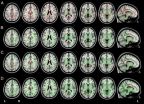(Press-News.org) Warring armies use a variety of tactics as they struggle to gain the upper hand. Among their tricks is to attack with a decoy force that occupies the defenders while an unseen force launches a separate attack that the defenders fail to notice.
A study published earlier this month in the journal Proceedings of the National Academy of Sciences suggests that the Hepatitis C virus (HCV) may employ similar tactics to distract the body's natural defenses. After infecting patients, Hepatitis C evolves many variants, among them an "altruistic" group of viral particles that appears to sacrifice itself to protect other mutants from the body's immune system.
The findings, reported by researchers from the Georgia Institute of Technology and the Centers for Disease Control and Prevention (CDC), could help guide development of future vaccines and treatments for the virus, which affects an estimated 170 million people in the world. Developing slowly over many years and often without symptoms, Hepatitis C can cause severe liver damage and cancer. There are currently no vaccines for the disease.
"The members of viral populations in Hepatitis C don't act like separate entities; the different variants work together almost like a team," said Leonid Bunimovich, a Regent's Professor in the Georgia Tech School of Mathematics. "There is a clear separation of responsibilities, including variants we call 'altruistic' because they sacrifice themselves for the good of the whole viral population. These variants seem to draw the immune system attack on themselves."
The findings resulted from mathematical modeling done by the scientists, who first developed a model for how the virus variants and immune system antibodies interact. They then used the model to analyze and explain data gathered from a group of patients infected with Hepatitis C, some of whom had been followed for as long as 20 years.
The virus evolves differently in each person, producing a mix of genetically-related variants over time, Bunimovich noted. Ultimately, the virus variants and the antibodies form a complex network in which an antibody to one variant can react to another variant - a phenomenon known as cross-immunoreactivity.
But how do viruses, which lack brains or even neural cells, produce a level of teamwork that's often difficult for humans to achieve?
"The virus variants do not communicate directly with one another, but in this system of viruses and antibodies, they interact through the antibodies," explained Bunimovich. "When one antibody-producing cell responds to one variant, and then to another, that is a form of interaction that affects both variants. An indirect interaction occurs when the virus variants interact with the same antibody in the network."
Unlike HIV - to which it is often compared - Hepatitis C virus doesn't suppress the body's immune system. Many scientists believe that the viral infection evolves like an "arms race," with the virus mutating to stay one step ahead of the body's immune system. Using next-generation gene sequencing data, the research team - which included regular fellow Pavel Skums and microbiologist Yury Khudyakov from the CDC's Division of Viral Hepatitis - analyzed viral populations in detail. The scientists studied the genetic compositions of the populations, and even saw evolution in blood samples taken from the same persons over time.
The populations of variants rose and fell, some remaining in small numbers and others reappearing after they had been seemingly wiped out by the immune system. At late stages of the persistent infection development, the evolution of new variations almost stopped, though the immune system remained strong. The "arms race" theory fails to explain these observations, Bunimovich said.
Using their model to track both variants and antibodies, the researchers found that certain variants were drawing the immune system response on themselves to protect others. They called this newly-observed phenomenon "antigenic cooperation." The antibodies suppressed only the altruistic variants, leaving other viral members of the network unharmed.
"The altruistic variants allow the antibodies to attack them, thereby sacrificing themselves, so other variants can survive," said Skums, the paper's first author. "The altruistic variants fool the immune system, rendering the immune system response to other variants ineffective. In essence, the surviving variants use the altruistic (sacrificing) variants as an umbrella to protect themselves."
The researchers were surprised by the sophisticated behavior, which occurs because the viral variants are part of the complex interconnected network - a social network not unlike the ones created in such environments as Facebook.
"Even such simple organisms as viruses can organize into a network," Skums explained. "Because they are part of a network, they can develop this kind of complex behavior, fighting the immune system through team efforts."
The findings, if supported by additional research, could alter the strategy for developing vaccines for Hepatitis C. Both vaccines and treatment would have to take into account how the virus evolves differently in individuals. The researchers also hope to examine the activity of other viruses to see if this complex interaction may also be found in other viral networks, Bunimovich said.
For the researchers, mathematics allowed them to see patterns that might otherwise have remained hidden in the complex patient data.
"Now that we see this from the mathematical model, everything makes sense," said Skums. "When you look at this mathematically, you can see the whole picture."
INFORMATION:
CITATION: "Antigenic cooperation among intrahost HCV variants organized into a complex network of cross-immunoreactivity," (Proceedings of the National Academy of Sciences, published ahead of print May 4, 2015). http://www.dx.doi.org/10.1073/pnas.1422942112
Millions of genetic variants have been discovered over the last 25 years, but interpreting the clinical impact of the differences in a person's genome remains a major bottleneck in genomic medicine. In a paper published in The New England Journal of Medicine on May 27, a consortium including investigators from Brigham and Women's Hospital (BWH) and Partners HealthCare present ClinGen, a program to evaluate the clinical relevance of genetic variants for use in precision medicine and research.
"We're dealing with massive amounts of information: more than 80 million genetic ...
Tremendous advances have been made in decoding the human genome in recent years but critical questions remain regarding what these variants mean and how they can be applied in clinical practice. In a comprehensive paper to be published in The New England Journal of Medicine on May 27, 2015, "ClinGen: The Clinical Genome Resource," a consortium including investigators from the American College of Medical Genetics and Genomics (ACMG) provide a detailed overview of ClinGen, an NIH-supported program to evaluate the clinical relevance of genetic variants for use in precision ...
Women who eat a Mediterranean diet could cut their risk of womb cancer by more than half (57 per cent), according to a study published today (Wednesday) in the British Journal of Cancer*.
The Italian researchers looked at the diets of over 5,000 Italian women to see how closely they stuck to a Mediterranean diet and whether they went on to develop womb cancer**.
The team broke the Mediterranean diet down into nine different components and measured how closely women stuck to them. The diet includes eating lots of vegetables, fruits and nuts, pulses, cereals and potatoes, ...
If greenhouse-gas emissions continue to rise, glaciers in the Everest region of the Himalayas could experience dramatic change in the decades to come. A team of researchers in Nepal, France and the Netherlands have found Everest glaciers could be very sensitive to future warming, and that sustained ice loss through the 21st century is likely. The research is published today (27 May) in The Cryosphere, an open access journal of the European Geosciences Union (EGU).
"The signal of future glacier change in the region is clear: continued and possibly accelerated mass loss ...
The psychological strain of being told that you may have breast cancer may be severe, even if it turns out later to be a false alarm. This is the finding of new research from the University of Copenhagen, which has just been published in the scientific journal Annals of Family Medicine. Researchers call for improving screening accuracy, thus reducing the number of false-positive mammograms.
It was a false alarm. You don't have breast cancer. This ought to be a happy message for women who have been through a mammography screening which initially showed signs of something ...
OAK BROOK, Ill. - Degeneration of the white matter of the brain may be an early marker of specific types of Alzheimer's disease (AD), including early-onset AD, according to results of a new study published in the journal Radiology.
"Alzheimer's is a gray matter disease," said Federica Agosta, M.D., Ph.D., co-author of the study conducted at the Neuroimaging Research Unit, San Raffaele Scientific Institute in Milan, Italy. "However, white matter damage has a central role in how the disease strikes and progresses."
AD is an irreversible, progressive brain disease that ...
The first practical guide to ensure the safe use of flavourings in e-cigarettes has been published (Regulatory Toxicology and Pharmacology DOI: 10.1016/j.yrtph.2015.05.018).
E-cigarettes and other vaping products contain a nicotine-based liquid that is vapourised and inhaled. There is no combustion so the user inhales vapour, not smoke. This means that e-cigarettes deliver nicotine without smoke toxicants. However, some in the public health community still have expressed concerns over the potential health impacts of flavourings used in e-cigarettes.
This is why the ...
The spinal tumor grew back. Even though the 16-year old patient endured surgery a year earlier to remove and diagnose the lesion, it was back and its cause unknown. Determined to identify the tumor tissue and set the patient on an appropriate treatment regimen, Albert Telfeian, M.D., a neurosurgeon at Rhode Island Hospital and Hasbro Children's Hospital, performed the first reported case of extracting the tumor endoscopically while the patient was awake and under a local anesthetic. The minimally invasive procedure enabled accurate diagnosis, which evaded multiple physicians ...
New research published today in Diabetologia (the journal of the European Association for the Study of Diabetes) indicates that consuming greater quantities of dietary fibre reduces the risk of developing type 2 diabetes.
Over 360 million people worldwide are estimated to be affected by diabetes, and this number is projected to increase to more than 550 million by 2030, with serious consequences for the health and economy of both developed and developing countries. While previous research has found an association between increased dietary fibre intake and a reduced risk ...
Professor Teppo Järvinen and colleagues say drug treatment "can achieve at best a marginal reduction in hip fractures at the cost of unnecessary harms and considerable waste of monetary resources." The article is part of The BMJ's Too Much Medicine campaign -- to highlight the threat to human health and the waste of resources caused by unnecessary care.
Worldwide, about 1.5 million hip fractures occur each year. They impose an enormous burden on healthcare resources and, with a growing elderly population, their incidence is predicted to rise.
Before the late ...



